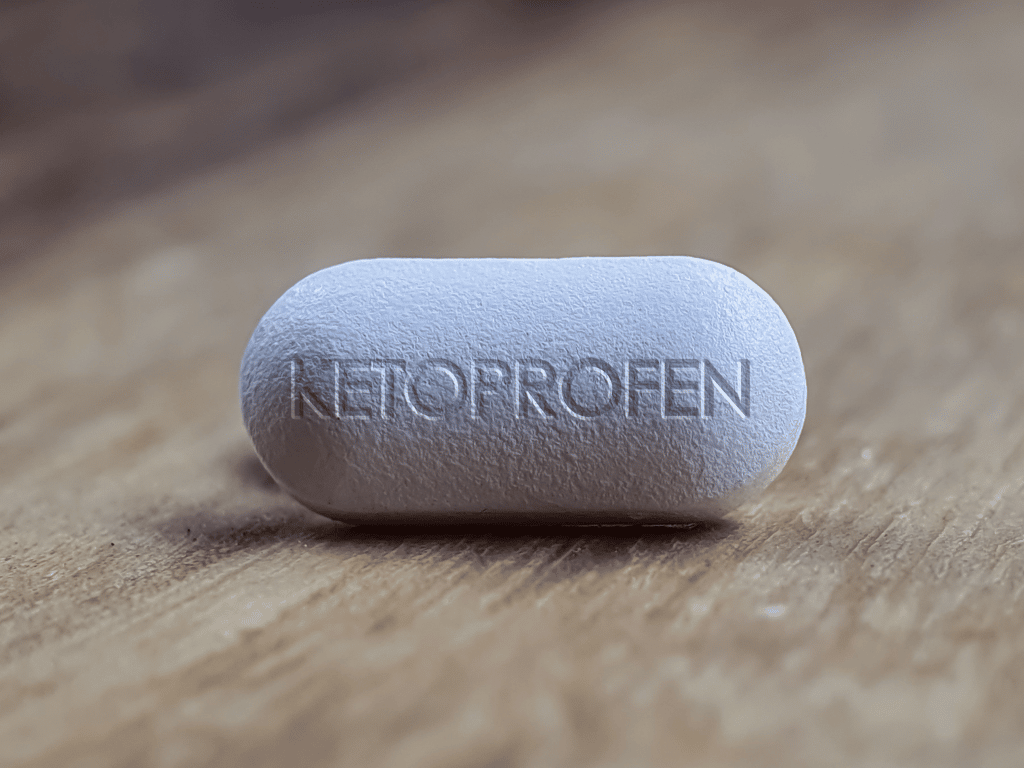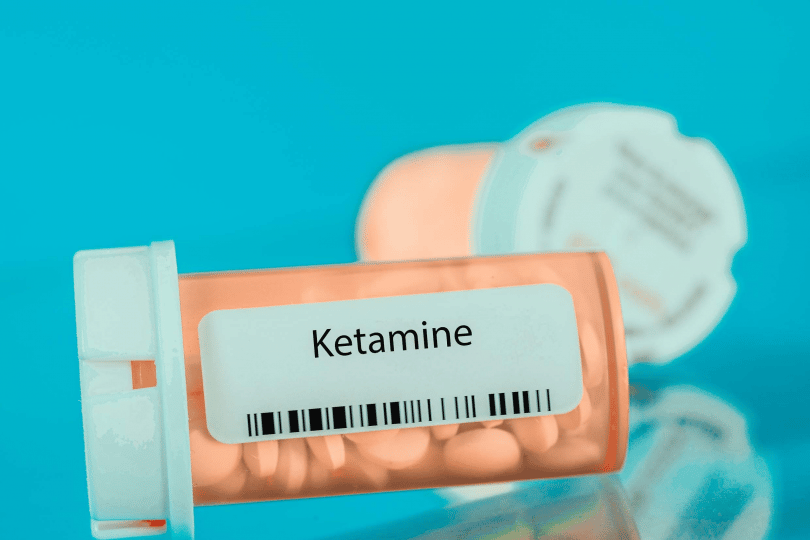Ketamine is in the process of exploding out into one of the most popular pharmaceutical drugs, but the ketamine industry is not like the rest of the pharma world. As a gray market it operates outside of specific regulation, and as such, there are a few ketamine safety issues to be aware of, and ways to avoid them for a safe experience.
Ketamine safety issues are something to be aware of when getting into ketamine treatment. This should not dissuade those looking for better treatment options, however. We are an independent publication reporting on the expanding cannabis and psychedelics fields of today. Play along by subscribing to The Cannadelics Weekly Newsletter, and receive your daily dose of industry news, while being first in line for new product promotions.
Why are we talking about ketamine?
This is a great question, and the answer creates a complicated framework, for which new and unexpected problems have arisen. Ketamine is a synthetically-made dissociative hallucinogen, not to be confused with ‘psychedelics’ which are simply a different genus within the classing of hallucinogens. Dissociative hallucinogens, which also include PCP and DXM, can often be used as anesthetics, and the high they produce is akin to being under anesthesia. In fact, take too much ketamine and you’ll k-hole yourself, essentially putting yourself under anesthesia.
The reason the aspect of anesthesia is important, is because anesthetics keep people from feeling pain, which means by nature, ketamine is associated with pain control. The reason the aspect of a hallucinogen is important, is because much like other hallucinogens (MDMA, psilocybin…), ketamine has shown the ability to change the way a person thinks, essentially allowing for new thought processes to be made, which is incredibly important for dealing with psychological issues. This has been exemplified in a study with eating disorder patients, whereby the thought is that ketamine actively blocked the circular thinking behavior related to excitement of the hippocampus by glutamate-NMDA receptors leading to strengthened thinking patterns. After ketamine treatment, the majority of patients decreased or ceased their compulsive thoughts.
As such, ketamine works on two fronts, providing a measure for depression, postpartum depression, eating disorders and other similar issues, as well as a way to control pain issues. Whereas monoamine antidepressants repeatedly fall short, ketamine seems to give better results, and whereas opioids cause mass addiction and overdose issues, ketamine is not related to either of these things. Both official research, and the existence and proliferation of the ketamine industry, both point to ketamine providing a better answer to these two issues.

The thing is, ketamine was never approved for these things. It’s half-brother esketamine was legalized only for treatment-resistant depression, but ketamine remains officially approved as just an anesthetic. The way it exists in the growing number of clinics providing ketamine treatment, is as an off-label medication, legally prescribed by a doctor for uses not officially approved by the FDA. This ability for off-label prescribing is the basis for the ketamine loophole, and the existence of this growing ketamine industry.
Is ketamine safe?
There are different ways to measure safety, and different concerns that can cause safety issues. One of the best measures is in death and injury. For all the government does to ignore it, ketamine has no real death toll. This isn’t to say that there has never been a problem, but these problems are so few and far between, that they don’t really register. Go ahead…do a search for ketamine death numbers. You won’t find any. In fact, the most you’ll find, are numbers of deaths where ketamine was involved, but the problem here, is that these are cases where other things were also involved, like opioids, or cocaine.
Even if you buy into the fear of it, you’re still going to have a difficult time finding those overdose death numbers. But where you won’t have that problem, is with opioids, the main medications used to treat pain issues. In fact, the numbers are so grossly huge, we now call it an ‘opioid epidemic’. Recent CDC numbers approximated 2021 overdoses at over 100,000, and this insanely large number owes most of its growth to the ballooning opioids industry. In 2020, for example, out of around 93,000 overdose deaths, nearly 70,000 were from opioids.
So is ketamine safe? Yes, especially in comparison to any of the drugs that make up that overdose list, because ketamine isn’t one of them. But it’s also not a drug pushed by the companies in the ‘Big Pharma’ grouping, which make up the largest and most powerful pharmaceutical companies, and the ones that pay out big bucks to government representatives.
Ketamine can be made by any pharma company, and in plenty of random basements, and this means Big Pharma companies don’t make money off it, and therefore aren’t going to put money in representatives’ pockets for it. Where do they make their money? Opioids. How nice for them that these drugs are so addictive, and that the government is so partial to anyone willing to pay out.
So, who has died from ketamine?
While some publications like to spout the oft said line that we don’t have much information on long-term use, or that we don’t know about certain effects, these lines are completely untrue. In terms of pain, it was established in the 1960’s during prisoner studies, that ketamine was especially good for pain, so much so that it was consequently used for soldiers in the Vietnam war. It’s also been a big player in the recreational game since the 1980’s, so there is plenty that can be gathered from users going back to that time. If nothing much is said about damage from long term use, its likely because there’s nothing to report on. When looking at opioids, cocaine, or methamphetamine, for example, health issues from long-term use are easily found.

This is all exemplified by China, where there are plenty of articles shouting about a ketamine issue, but a reality of literally no direct death count, with the very few deaths (out of over a billion, let’s remember) also being associated with other drugs. It sounds like ketamine has grown in popularity in China, but anyone clamoring on about it causing mass safety issues, isn’t looking at the facts. There are a couple other things written about bladder issues with extreme use, but not only is extreme use of anything generally related to something uncomfortable, but the existence of this complaint is so sparse, and the examples so few, that it starts to sound more like a smear campaign than anything else.
This study from Australia is also harping on ketamine as unsafe, but when looking more closely, this is nothing but a farce. 95% of deaths spoken of, involved other drugs, nearly 60% of which were opioids. Hypnosedatives were in the blood of 57.6%, psychostimulants were also used by 50.0%, and alcohol was present for 27.3%. Almost 29% had regular antidepressants in their system as well. Also worth mentioning, over 82% had pulmonary edema, and almost 27% had pneumonia. So it’s not really about ketamine in the end, and the idea that the title of the study is headlined Characteristics and circumstances of death related to the self-administration of ketamine, is a joke at best.
Ketamine safety issues
So, sure, ketamine is technically safe. But it doesn’t mean that ketamine doesn’t have safety issues to consider, especially considering the industry itself. And it’s the tactics of the industry, where prospective users should be careful.
- One of the biggest ketamine safety issues is that as a growing industry, everyone wants to get in on it. As a medical provider, any clinic that wants to prescribe and dispense it, must follow certain medical protocols. However, as ketamine itself isn’t regulated for these uses, there are no specific protocols that must be followed in how its dispensed and used. This opens the door for misuse and confusion, as well as sub-par products.
- For example, some clinics don’t require the patient to be in the clinic, and will actually send the medicine to the home of the patient, or prescribe it for them to pick up at a pharmacy. In these cases, no doctor is present when the medication is taken. Some do a session via a video call, or require a babysitter to be there, but the latter can’t be guaranteed, and there isn’t necessarily a way to protect a patient from unsafe surroundings. Allowing a person to go into such an uncontrolled state, without assuring their safety, is incredibly dangerous. Ketamine, it should be remembered, is one of the drugs often used for date rape.
- The other issue with sending someone home with the medicine, rather than administering it in a medical setting, is that it means its not going to be used by injection, but rather by oral ingestion. As oral ingestion provides for much lower and inconsistent bioavailability (the ability of the body to actually absorb and use it), dosing is much less precise, and is generally given in much larger amounts to account for the lessened bioavailability. This means users and their prescribing doctors have no idea how strong the dose will actually end up being, and this could be the difference between a light dose, and giving way too much.

How to avoid ketamine safety issues
The best way to avoid these issues, is to only use a service that requires in-patient treatment. In-patient treatment means that the ketamine is given via IV injection, so the dose is much more refined for the specific patient, and there is less of an issue with giving too much. Plus, as it doesn’t require going through the body, it means that dosing is consistent across treatments, without worrying about other factors changing how much gets absorbed.
Going to in-patient treatment facilities also gets rid of the fear of danger when being put in a state of lessened response. If a person is made high to the point of a k-hole, they cannot control what happens to them, or who could hurt them. Even though many people take the oral dosage in their home, this doesn’t always rule out danger. Being in a medical setting gives an extra layer of protection to ensure that nothing bad happens to a patient when under the influence. As with any drug, there can be adverse effects, or unexpected circumstances. Being in a medical setting means having trained professionals right there that can assist.
While there are plenty of decent clinics to choose from, examples like Pasithea represent the highest level of care offered, the most adherence to safety policies, and a general lack of the behavior seen by unscrupulous companies that promote these safety issues. Prospective patients should do their homework and only use a clinic that values their personal safety.
As with any industry that has a seedy side, it’s important for customers to know who they’re dealing with. Clinics that cut corners represent the shadier side of this industry, and show a greater level of apathy towards their clientele. Clinics that adhere to as many general safety practices as possible – even if they’re not technically required to, represent the higher end, and are the safer companies to work with.
These treatments can be expensive, so it’s no wonder that consumers often head toward a cheaper option. Hopefully costs will come down eventually, so that those who want this treatment, but can’t afford a better clinic, won’t be pushed to using unsafe practitioners. Ketamine holds a lot of value, but like anything else, it should be administered and used responsibly.
Conclusion
Ketamine might provide a safe answer for dealing with psychological disorders and pain, but it doesn’t mean that it doesn’t come without issues. There are plenty of ketamine safety issues to consider, but luckily, simply using the right provider can dispel the majority.
Hello, thanks for stopping by! Welcome to CBDtesters.co / Cannadelics.com, a #1 offering for wide-ranging news covering the cannabis and psychedelics fields. Join us whenever you can to stay current on all goings on, and subscribe to The Cannadelics Weekly Newsletter, for daily updates on everything important happening now.









